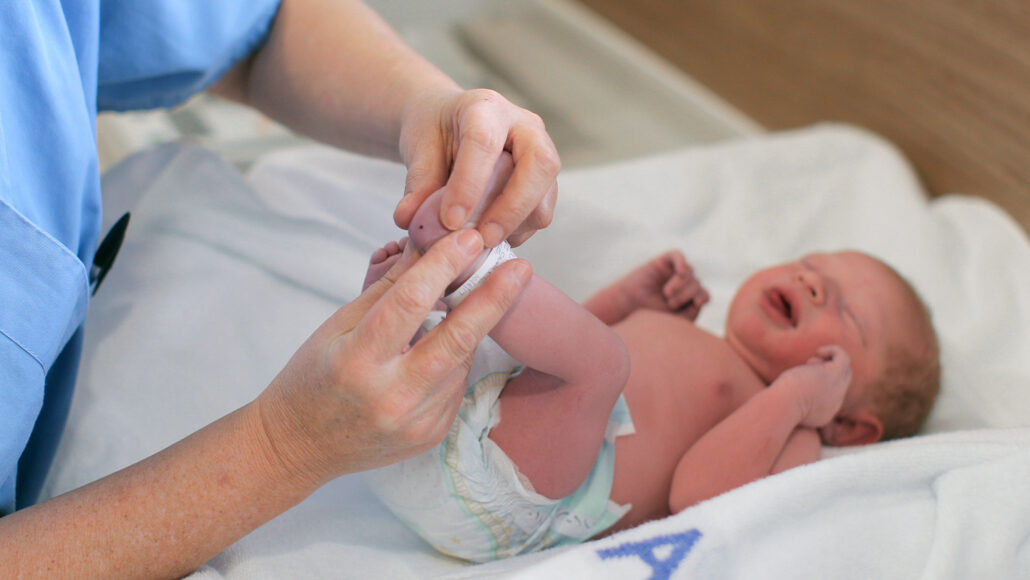Contents
- Factors Influencing Infant Development
- Physical Development Milestones
- Emotional And Social Development
- The Role Of Stimulation And Enrichment
- Monitoring Developmental Milestones
- Recognizing Red Flags
- Understanding Developmental Delays And Warning Signs
- Seeking Professional Evaluation And Intervention
- Regular Check-Ups And Assessments
- Importance Of Regular Pediatrician Visits
- Standardized Developmental Assessments For Tracking Progress
- Parental Observations And Engagement
- Strategies For Promoting Healthy Development Through Parental Involvement
- Frequently Asked Questions Of Between Birth And One Year Infants
- Conclusion
Between birth and one year, infants undergo rapid physical and cognitive development, reaching significant milestones such as rolling, sitting, crawling, and walking, as well as developing communication and social skills. During this crucial period, infants require proper nutrition, frequent interactions, and a safe and stimulating environment to support their overall growth and development.
Understanding the specific needs and capabilities of infants during this time is essential for caregivers and parents to provide optimal care and foster healthy development. We will explore the various aspects of an infant’s growth and development between birth and one year, including their physical, cognitive, social, and emotional milestones, as well as the importance of responsive caregiving and early stimulation for their overall well-being.
Factors Influencing Infant Development
Factors influencing infant development between birth and one year include genetics, nutrition, sensory stimulation, caregiver interaction, and environmental factors. These factors play a crucial role in shaping an infant’s cognitive, physical, social, and emotional development during this important stage of life.
Between birth and one year of age, infants go through a rapid period of growth and development. Various factors play a crucial role in shaping their journey towards reaching important milestones. Let’s explore the factors that greatly influence infant development:
Genetic Factors
Genes hold a significant role in shaping a baby’s development. Here’s what you should know about the role of genes:
- Inherited Traits and Characteristics: Genetic factors determine many physical and cognitive traits that infants inherit from their parents. These traits can include eye color, hair type, height, and even certain personality traits.
- Unique Genetic Makeup: Each child possesses a unique genetic makeup that interacts with the surrounding environment, contributing to their growth and development. Understanding the inherent traits and characteristics allows parents and caregivers to tailor their support accordingly.
Environmental Factors
The surroundings in which an infant grows have a profound impact on their overall development. Consider the following points:
- Nurturing and Stimulating Environment: Infants thrive in nurturing and stimulating environments where they feel safe and loved. Such an environment encourages exploration, learning, and the development of various skills, including cognitive, physical, and social abilities.
- Impact on Brain Development: The external environment significantly influences brain development during the critical early years. Providing infants with a diverse and stimulating environment helps establish robust neural connections and supports essential developmental processes.
Nutritional Factors
Nutrition plays a vital role in fostering optimal growth and development in infants. Consider the following points about nutritional factors:
- Breastfeeding and Introduction to Solid Foods: Breastfeeding is recommended as the primary source of nutrition for the first six months of an infant’s life. Breast milk provides essential nutrients and antibodies that support their overall well-being. The introduction of solid foods after the sixth month, as guided by healthcare professionals, further provides necessary nutrients and aids in the development of motor skills.
- Proper Nutrient Intake: Ensuring that infants receive a balanced diet with appropriate nutrients, vitamins, and minerals is crucial. It supports their physical growth, brain development, and overall health and ensures that they have the energy and resources needed for optimal development.
Remember, as parents or caregivers, understanding these factors can guide you in providing the best possible support for your infant’s growth and development. By creating a nurturing environment, recognizing the influence of genetics, and providing appropriate nutrition, you set a strong foundation for their future well-being.
Physical Development Milestones
During the first year of life, infants achieve important physical development milestones, including the ability to lift and hold their heads, sit without support, and eventually crawl and walk. These milestones mark key stages in their growth and motor skills development.
Between Birth And One Year Infants
Motor Skills Development:
- Infants start developing motor skills in their first year, reaching milestones that showcase their physical growth and dexterity.
- Reaching and grasping objects:
- At around 3 to 4 months, infants begin to reach and grasp objects within their visual range.
- They refine their skills over time, improving their ability to grab and hold onto objects with greater control.
- Crawling and walking milestones:
- Around 6 to 9 months, babies start to crawl, using their arms and legs to move around independently.
- By approximately 12 months, some infants take their first steps, marking an exciting milestone in their physical development.
Sensory Development:
- Sensory development plays a vital role in infants’ understanding of the world around them.
- Vision development and visual stimuli:
- Newborns have limited vision but rapidly develop their ability to focus and perceive depth.
- They become more responsive to visual stimuli, such as bright colors and contrasting patterns, within a few months.
- Hearing and auditory stimulation:
- From birth, infants can recognize familiar sounds and voices.
- As their auditory system matures, they become more attuned to different pitches and tones, responding to various sounds in their environment.
Cognitive Development:
- Cognitive development involves the growth of thinking and understanding capabilities in infants.
- Object permanence and understanding cause and effect:
- Around 8 to 9 months, babies begin to comprehend object permanence, realizing that objects exist even when out of sight.
- They also develop an understanding of cause and effect, recognizing that their actions can lead to certain outcomes.
- Language acquisition and communication skills:
- Infants gradually acquire language skills, starting with babbling sounds in the first few months.
- As they progress, they begin to imitate sounds and words, building the foundation for later language development.
In their early months, infants rapidly progress in physical, sensory, and cognitive milestones. From mastering the art of reaching and grasping objects to exploring their surroundings by crawling and walking, these achievements mark their growing abilities. As their vision develops, babies become fascinated by various visual stimuli, while their hearing expands to detect different sounds and voices.
Their cognitive prowess blossoms as they understand concepts like object permanence and cause and effect. Furthermore, language acquisition plays a crucial role in their communication skills, setting the stage for future linguistic development. These milestones collectively show the remarkable progress infants make in their first year, laying the foundation for further growth and learning.
Emotional And Social Development
Infants between birth and one year experience significant emotional and social development. They begin to form emotional bonds with their caregivers, exhibit social smiles, and show early signs of social interaction through eye contact and babbling.
Between Birth And One Year Infants
Bonding and Attachment:
- Early bonding with caregivers forms the foundation for healthy emotional development.
- Establishing secure attachment leads to an infant feeling safe and loved.
- Insecure attachment styles may lead to difficulties in relationships later in life.
Importance of early bonding with caregivers:
- Creates a sense of security and trust for infants.
- Enhances emotional regulation skills and promotes overall well-being.
- Develops a strong foundation for future social interactions.
Secure vs insecure attachment styles:
- Secure attachment: Infants feel safe and comfortable exploring their surroundings, knowing that their caregiver is available and responsive.
- Insecure attachment: Infants may exhibit clingy behavior, avoid exploring, or show distress when separated from their caregiver.
Social Interaction and Play:
- Peer interactions and social engagement play a crucial role in infants’ social development.
- Babies gain valuable social skills through observing and imitating others.
- Engaging in play with caregivers and peers promotes cognitive and social development.
The role of play in cognitive and social development:
- Play provides opportunities for infants to learn about cause and effect, problem-solving, and creativity.
- Through play, infants develop communication skills, learn to take turns, and build relationships.
- Play encourages emotional expression and fosters imagination and social bonding.
Emotional Regulation:
- Infants begin to recognize and express emotions during their first year of life.
- Strategies for promoting emotional well-being in infants include:
- Responding to their needs promptly and sensitively.
- Creating a secure and predictable environment.
- Providing comfort and reassurance during times of distress.
- Encouraging self-soothing techniques, such as sucking on a pacifier or cuddling a favorite toy.
Peer interactions and social engagement:
- Infants benefit from observing and imitating other children during social interactions.
- Engaging in playgroups or daycare settings provides opportunities for infants to interact with peers.
- Social engagement helps develop communication skills, empathy, and cooperation.
Fostering early bonding and secure attachment with caregivers forms the foundation for an infant’s emotional and social development. Social interaction and play are vital for building social skills and cognitive abilities. Recognizing and expressing emotions and promoting emotional well-being contribute to an infant’s overall development.
By providing a positive and nurturing environment, we can support infants in their journey of emotional and social growth.
The Role Of Stimulation And Enrichment
Stimulation and enrichment play a vital role in the development of infants between birth and one year. It helps enhance cognitive and motor skills, promotes sensory exploration, and fosters healthy emotional and social development.
Between Birth And One Year Infants:
Right from the moment they are born, infants are constantly absorbing information and experiencing the world around them. Engaging infants in stimulating activities and providing them with enriching experiences can greatly contribute to their overall development. In this section, we will explore the role of stimulation and enrichment during the first year of an infant’s life.
Sensory Stimulation Activities
Engaging the senses through play and exploration:
- Singing nursery rhymes and playing musical toys can stimulate the auditory senses.
- Providing colorful and textured toys can enhance visual and tactile stimulation.
- Offering toys that make different sounds or have different textures can encourage exploration and sensory development.
Creating a sensory-rich environment for optimal development:
- Creating a safe and stimulating environment with a variety of age-appropriate toys and objects can promote sensory exploration.
- Introducing different smells and tastes through various foods or scented toys can stimulate the olfactory and gustatory senses.
- Allowing infants to experience different textures, such as soft fabrics or bumpy surfaces, can contribute to their sensory development.
Language Stimulation Techniques
Reading and talking to infants:
- Reading age-appropriate books with colorful pictures helps infants develop an early love for reading.
- Engaging in daily conversations with infants, even if they can’t respond, helps them absorb language patterns and develop communication skills.
- Pointing out objects and naming them during daily activities can enhance language comprehension.
Promoting language development through songs and rhymes:
- Singing songs and reciting nursery rhymes helps infants recognize rhythms, patterns, and different phonetic sounds.
- Repeating simple words and sounds during playful interactions can encourage infants to imitate and develop their own language skills.
- Using gestures and facial expressions alongside words can enhance infants’ understanding of language.
Cognitive Stimulation Exercises
Problem-solving activities and games:
- Offering age-appropriate puzzles and sorting toys can encourage infants to think critically and problem solve.
- Providing toys that require pushing, stacking, or fitting objects together can help develop fine motor skills and cognitive abilities.
- Allowing infants to explore cause-and-effect toys, such as buttons that produce sounds, can stimulate their curiosity and problem-solving skills.
Promoting cognitive development through interactive play:
- Engaging in interactive play, like peek-a-boo or hide-and-seek, helps infants develop cognitive skills such as object permanence and spatial awareness.
- Introducing simple games that involve matching, sorting, or categorizing objects can enhance cognitive abilities.
- Rotating and introducing new toys regularly keeps infants engaged and stimulates their cognitive exploration.
By engaging infants in sensory stimulation activities, language stimulation techniques, and cognitive stimulation exercises, caregivers can provide a nurturing environment that supports optimal development during the first year of an infant’s life.
Monitoring Developmental Milestones
Monitoring the developmental milestones of infants between birth and one year is crucial for their overall growth and well-being. By carefully observing their physical, cognitive, and social progress, parents can ensure their child’s healthy development.
Babies grow and develop at an astonishing pace during their first year. It is essential for parents to closely monitor their infants’ developmental milestones to ensure they are progressing as expected. By recognizing red flags, understanding developmental delays, seeking professional evaluation and intervention, and actively engaging with their little ones, parents can play a crucial role in promoting healthy development.
In this section, we will explore the importance of regular check-ups and assessments, as well as the significance of parental observations and involvement.
Recognizing Red Flags
It is important for parents to be aware of potential red flags that may indicate a developmental delay or concern. Some warning signs to watch out for include:
- Lack of eye contact or response to familiar faces
- Delayed motor skills, such as not rolling over or sitting up by 6-7 months
- Inability to grasp and hold objects
- Limited babbling or absence of basic sounds by 7 months
- Failure to show interest in surroundings or toys
- Difficulty imitating facial expressions or gestures
Understanding Developmental Delays And Warning Signs
If parents notice any of the aforementioned red flags or have concerns about their baby’s development, it is crucial to seek professional evaluation and intervention. Developmental delays can occur for various reasons, such as genetic factors, prematurity, or neurological conditions.
Early identification and intervention can make a significant difference in helping infants reach their full potential.
Seeking Professional Evaluation And Intervention
Parents should not hesitate to consult with their pediatrician or a qualified healthcare professional if they have concerns about their child’s development. These professionals have the expertise to assess developmental milestones and can determine if any further evaluations or interventions are necessary.
Early intervention programs can provide tailored support and therapies to address specific developmental needs.
Regular Check-Ups And Assessments
Regular pediatrician visits are vital for monitoring an infant’s growth and development. These check-ups typically include developmental assessments to track progress and identify any potential concerns. During these visits, parents can discuss any observations or questions they might have, allowing the pediatrician to offer guidance and address any parental concerns.
Importance Of Regular Pediatrician Visits
Regular visits to the pediatrician not only ensure the overall health and well-being of the infant but also help identify and address any developmental delays or concerns promptly. These visits provide an opportunity for parents to receive expert guidance, learn about age-appropriate developmental milestones, and address any questions or concerns they may have.
Standardized Developmental Assessments For Tracking Progress
Pediatricians often use standardized developmental assessments to track an infant’s progress across various developmental domains. These assessments can help identify any delays or deviations from the expected milestones. By consistently monitoring these milestones, healthcare professionals can intervene early if necessary, increasing the chances of successful intervention and positive outcomes.
Parental Observations And Engagement
Parents play a crucial role in monitoring their baby’s development. By actively observing and engaging with their infants, parents can identify patterns, progress, and potential concerns. Some strategies for promoting healthy development through parental involvement include:
- Engaging in activities that stimulate cognitive and motor skills, such as reading, singing, and interactive play
- Encouraging tummy time and providing a safe and stimulating environment for exploration
- Establishing a consistent routine for sleep, meals, and playtime
- Responding to their baby’s cues and signals, fostering a secure attachment
Strategies For Promoting Healthy Development Through Parental Involvement
- Engage in daily interactive activities, such as talking, singing, and playing with toys to stimulate language and cognitive skills.
- Provide a safe and nurturing environment that encourages exploration and independence.
- Practice responsive parenting by promptly attending to the baby’s needs and signals, building a strong bond.
- Seek support and guidance from healthcare professionals and parenting resources to ensure parents have the necessary tools and information to support their baby’s development.
Remember, every baby is unique, and development varies from child to child. By actively monitoring developmental milestones, seeking professional advice when needed, and engaging with their infants, parents can actively contribute to their child’s healthy development and well-being.

Credit: www.newscientist.com
Frequently Asked Questions Of Between Birth And One Year Infants
What Is A Child From Birth To One Year Of Age Called?
A child from birth to one year of age is called an infant.
Are Between Birth And One Year Infants Dependent On The Caregivers?
Yes, infants between birth and one year are dependent on their caregivers for their needs.
What Age Is Considered An Infant?
An infant is typically considered to be a baby between the ages of 0 and 12 months.
What Is A Child From Birth To Adolescence?
A child from birth to adolescence is a person between infancy and teenage years, going through physical, mental, and emotional growth.
Conclusion
The first year of a baby’s life is a period of rapid growth and development. From infancy to their first birthday, infants undergo tremendous physical, cognitive, and emotional changes. They begin to explore their surroundings, develop basic motor skills, and establish their own unique personalities.
It is a critical time for parents to provide a nurturing and stimulating environment to support their baby’s development. During this stage, parents should focus on providing a safe and loving environment, offering plenty of opportunities for sensory stimulation and interaction.
Engaging with their baby through play, reading, and talking helps to foster language and social skills. This is also a time to introduce a variety of healthy foods as babies start to transition to solid foods. Understanding the milestones and developmental expectations during the first year helps parents track their baby’s progress and identify any potential delays or concerns.
Regular check-ups with healthcare professionals and open communication with other parents can provide valuable support and guidance. Overall, the first year of a baby’s life is a time of wonder and discovery, and by providing the right nurturing and stimulating environment, parents can help their babies thrive and reach their full potential.











